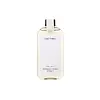What's inside
What's inside
 Key Ingredients
Key Ingredients

 Benefits
Benefits

 Ingredients Side-by-side
Ingredients Side-by-side

Centella Asiatica Leaf Water
Skin ConditioningWater
Skin ConditioningButylene Glycol
HumectantHouttuynia Cordata Water
MaskingPropanediol
SolventGlycerin
Humectant1,2-Hexanediol
Skin ConditioningSodium Dna
Skin ConditioningSalmon Egg Extract
Madecassoside
AntioxidantPortulaca Oleracea Extract
Skin ConditioningPanthenol
Skin ConditioningPersea Gratissima Fruit Extract
EmollientDextrin
AbsorbentTheobroma Cacao Extract
Skin ConditioningAllantoin
Skin ConditioningMaltodextrin
AbsorbentEthylhexylglycerin
Skin ConditioningSodium Hyaluronate
HumectantDisodium EDTA
Centella Asiatica Leaf Water, Water, Butylene Glycol, Houttuynia Cordata Water, Propanediol, Glycerin, 1,2-Hexanediol, Sodium Dna, Salmon Egg Extract, Madecassoside, Portulaca Oleracea Extract, Panthenol, Persea Gratissima Fruit Extract, Dextrin, Theobroma Cacao Extract, Allantoin, Maltodextrin, Ethylhexylglycerin, Sodium Hyaluronate, Disodium EDTA
 Reviews
Reviews

Ingredients Explained
These ingredients are found in both products.
Ingredients higher up in an ingredient list are typically present in a larger amount.
1,2-Hexanediol is a synthetic liquid and another multi-functional powerhouse.
It is a:
- Humectant, drawing moisture into the skin
- Emollient, helping to soften skin
- Solvent, dispersing and stabilizing formulas
- Preservative booster, enhancing the antimicrobial activity of other preservatives
Butylene Glycol (or BG) is used within cosmetic products for a few different reasons:
Overall, Butylene Glycol is a safe and well-rounded ingredient that works well with other ingredients.
Though this ingredient works well with most skin types, some people with sensitive skin may experience a reaction such as allergic rashes, closed comedones, or itchiness.
Learn more about Butylene GlycolEthylhexylglycerin (we can't pronounce this either) is commonly used as a preservative and skin softener. It is derived from glyceryl.
You might see Ethylhexylglycerin often paired with other preservatives such as phenoxyethanol. Ethylhexylglycerin has been found to increase the effectiveness of these other preservatives.
Sodium Hyaluronate is hyaluronic acid's salt form. It is commonly derived from the sodium salt of hyaluronic acid.
Like hyaluronic acid, it is great at holding water and acts as a humectant. This makes it a great skin hydrating ingredient.
Sodium Hyaluronate is naturally occurring in our bodies and is mostly found in eye fluid and joints.
These are some other common types of Hyaluronic Acid:
Learn more about Sodium Hyaluronate